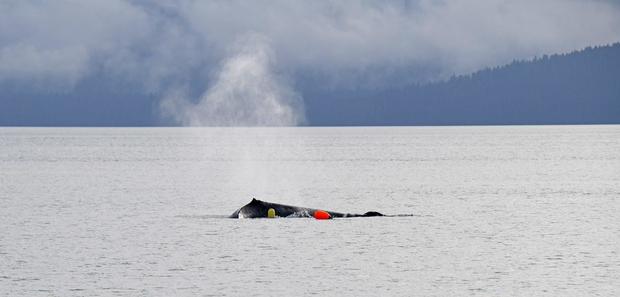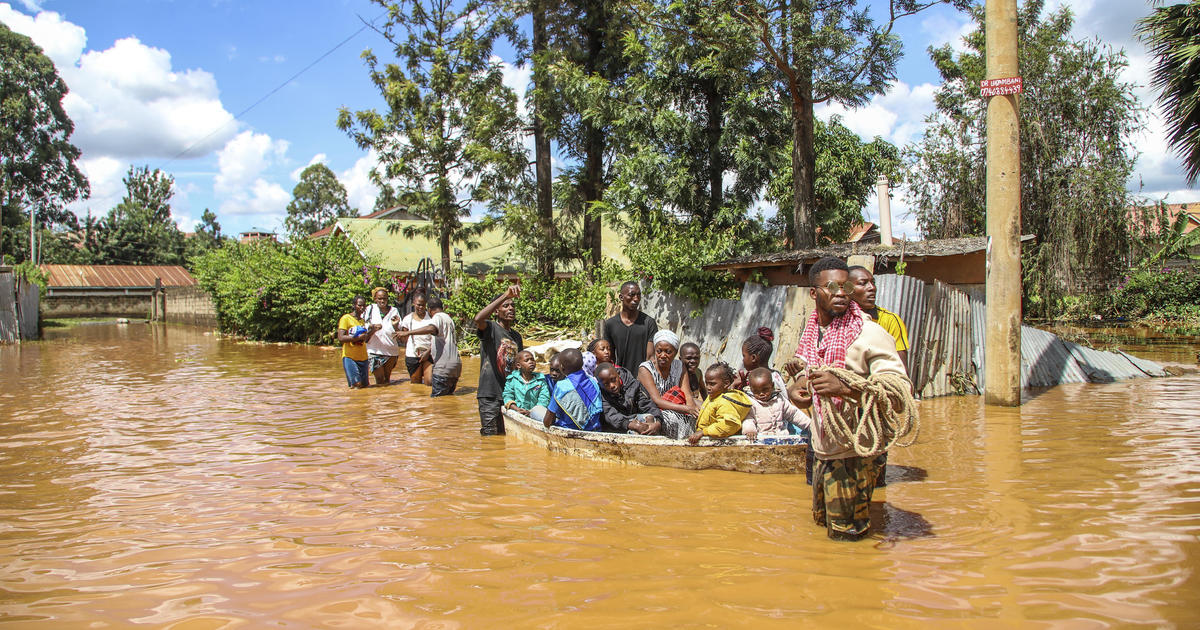Video shows whale rescued after being "hog-tied" to 300-pound crab pot off Alaska
A humpback whale was freed earlier this month from an entanglement that wildlife officials considered life-threatening in the Gulf of Alaska. The whale, a juvenile, was effectively "hog-tied" for at least three days by 450 feet of heavy-duty line attached to an underwater crab pot weighing 300 pounds, the National Park Service said.
Two local residents initially spotted the mammal on Oct. 10, at the tail end of Alaska's humpback whale season, which typically runs from April through November in the waters around Juneau. The locals, Sesylia Hazen and Kamille Williams, contacted the visitor information station at Glacier Bay National Park to report that a humpback whale "was trailing two buoys, making unusual sounds and having trouble moving freely," the park service said. They had seen the whale struggling near a dock in Gustavus, a city in the Alaskan gulf near Juneau and Glacier Bay, a protected national park area.
A day-long rescue mission ensued, involving NPS patrol teams and specialists with the Large Whale Entanglement Response network. Dramatic video footage taken by a drone camera and released by the National Park Service offers a glimpse into the complicated operation.
Because the threat to life for large whales that are entangled is not usually immediate, as it is for smaller marine mammals, "there is time to cut the animal free," the National Oceanic and Atmospheric Administration writes in an overview of disentanglement procedures in Alaska. But, it notes, the whale's massive size presents its own challenges for rescues that "can be quite dangerous for humans and the animal alike." Rescuers use a boat-based method, NOAA Fisheries says, and either throw grapples or use hooks on the end of poles to latch onto the entangled animal, and then attach large buoys to the gear to hold the whale in place. Then, they carefully use knives to cut the whale free.
"The Glacier Bay National Park entanglement response team was critical in this effort. They provided the vessel and staff to successfully evaluate the whale's condition and then deployed a team to disentangle the whale," said Sadie Wright, a large whale entanglement response coordinator at the NOAA Fisheries regional office in Alaska, in a statement.
The actual rescue operation happened Oct. 11, once Alaska wildlife officials had gotten a closer look at the whale and confirmed it was partly anchored to the sea floor by the crab pot. They had help from the owner of the crab pot fishing gear, who gave information about the location, and from a volunteer drone pilot, Sean Neilson, whose aerial footage determined that "this was a complicated entanglement with a line through the whale's mouth, and wrapped around the animal's tail stock," officials said.
When officials approached the whale, it had limited mobility and was swimming in clockwise circles, according to NOAA Fisheries.
"It was making 7-9 minute dives and was at the surface for only about 30 seconds. The footage from the drone soon revealed why," the agency said. "The whale had a loop of line through its mouth that led to a large, heavy glob of tangled lines at its tail. In effect, the whale was hog-tied, its body bent sharply to the side as it swam in a predictable clockwise circle each time it came up."
The whale had a scar across its back from being hit by a propeller, but officials determined that healed injury was unrelated to the crab pot entanglement.
Rescuers were able to loosen the gear one cut at a time, and once the stretch of rope running through the whale's mouth and around its tail was severed, the humpback swam away. The whale left most of the fishing line and the two buoys floating at the surface of the water, and all of that gear was collected, officials said, although they noted that the crab pot itself has not yet been recovered. They said it is likely still sitting on the sea floor, in the area where the whale was last seen.





